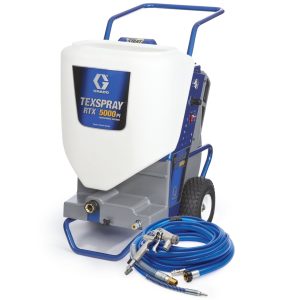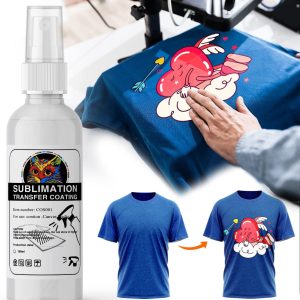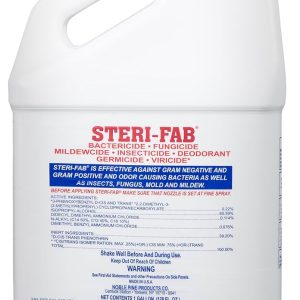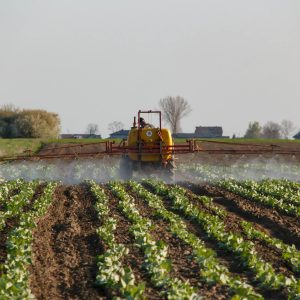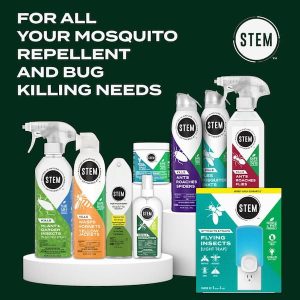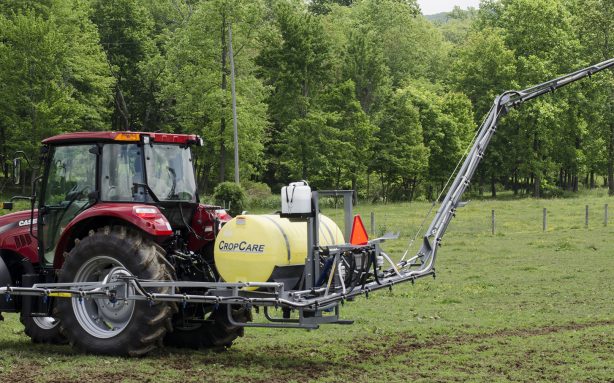
Agricultural efficiency depends heavily on reliable spray equipment, and three point sprayers have revolutionized how farmers approach crop protection, weed control, and field maintenance. These versatile tractor-mounted systems offer unmatched precision and productivity for operations ranging from small homesteads to large commercial farms. Understanding the capabilities and specifications of modern three point sprayer technology can dramatically improve your agricultural outcomes while reducing operational costs.
What Makes Three Point Sprayer Systems Essential for Modern Agriculture
Three point sprayer systems represent the pinnacle of agricultural spray technology, designed to mount directly onto your tractor’s three-point hitch system. These powerful units provide consistent, controlled application of herbicides, pesticides, fertilizers, and other agricultural solutions across vast areas with remarkable efficiency. The integration with your existing tractor equipment eliminates the need for separate spray vehicles, maximizing your equipment investment while streamlining field operations.
The fundamental advantage of a three point sprayer lies in its ability to deliver precise chemical application while maintaining optimal ground speed and coverage patterns. Professional-grade units feature advanced pump systems, calibrated nozzles, and sophisticated boom designs that ensure uniform distribution across your target area. This precision translates directly into reduced chemical waste, lower operational costs, and improved crop yields through more effective pest and weed management.
Modern three point sprayer designs incorporate cutting-edge materials and engineering principles that deliver exceptional durability under demanding field conditions. High-density polyethylene tanks resist chemical corrosion while maintaining structural integrity across temperature extremes. Heavy-duty steel frames and reinforced mounting points ensure reliable performance even when navigating rough terrain or working with challenging soil conditions.
Comprehensive Three Point Sprayer Capacity Options and Specifications
Tank capacity represents one of the most critical considerations when selecting a three point sprayer for your operation. Industry-leading manufacturers offer extensive capacity ranges to match specific operational requirements:
Small to Medium Operations (45-200 Gallons)
- 45-60 gallon models: Perfect for homeowners and small farms
- 100-150 gallon systems: Ideal for medium-sized properties and specialty crops
- 200 gallon units: Suitable for mid-size commercial operations
Large-Scale Commercial Operations (300-1950 Gallons)
- 300-500 gallon systems: Designed for extensive row crop operations
- 800-1000 gallon units: Built for large-scale commercial farming
- 1950 gallon capacity: Maximum efficiency for the largest agricultural operations
Leading manufacturers like FIMCO offer three point sprayers ranging from 45 gallons up to 300 gallons, while Ag Spray Equipment provides models from 60 gallons up to 1950 gallons to meet all spraying needs. This extensive range ensures that every agricultural operation can find a three point sprayer perfectly matched to their specific requirements and field conditions.
The relationship between tank capacity and operational efficiency becomes particularly important when considering field size and refill logistics. Larger capacity units reduce the frequency of refill cycles, maintaining consistent productivity during critical application windows. However, larger tanks also increase overall system weight, potentially limiting use on smaller tractors or in soft field conditions.
Advanced Pump Systems and Flow Rate Capabilities
Three point sprayer pump technology has evolved significantly, incorporating advanced engineering principles that deliver consistent pressure and flow rates across diverse operating conditions. Professional-grade pumps utilize high-performance diaphragm or centrifugal designs that maintain optimal spray patterns regardless of ground speed variations or terrain challenges.
Diaphragm Pump Systems
- Pressure ranges: 20-60 PSI for precise application control
- Flow rates: 5-25 gallons per minute depending on model
- Chemical compatibility: Resistant to aggressive agricultural chemicals
- Maintenance requirements: Simplified service procedures for minimal downtime
Centrifugal Pump Configurations
- High-volume applications: 30-80 gallons per minute flow rates
- Low-pressure operation: 10-40 PSI for sensitive applications
- Self-priming capability: Quick startup and reliable operation
- Durability features: Corrosion-resistant materials and sealed bearings
The selection between pump types depends primarily on your specific application requirements and chemical types. Diaphragm pumps excel in situations requiring precise pressure control and chemical compatibility, while centrifugal systems provide higher flow rates for broad-area coverage applications.
Boom Design and Nozzle Technology for Optimal Coverage
Professional three point sprayer systems feature sophisticated boom designs that ensure uniform chemical distribution across the entire spray width. Modern boom configurations incorporate advanced materials and engineering principles that deliver consistent performance while minimizing drift and ensuring precise application rates.
Boom Configuration Options
- Manual fold booms: 20-40 foot coverage widths for standard operations
- Hydraulic fold systems: 30-60 foot widths with convenient field adjustment
- Breakaway protection: Prevents boom damage during field operations
- Height adjustment: Optimizes spray pattern for various crop heights
Advanced nozzle technology represents a critical component of effective three point sprayer operation. Modern nozzle designs incorporate precision-engineered orifices and spray patterns that optimize droplet size distribution for specific application requirements. Anti-drift nozzles reduce environmental impact while maintaining application effectiveness, particularly important for operations near sensitive areas.
Nozzle Selection Criteria:
- Flat fan nozzles: Standard applications with uniform coverage
- Hollow cone patterns: Penetration applications for dense crop canopies
- Flood nozzles: High-volume applications and soil incorporation
- Air induction designs: Reduced drift for sensitive chemical applications
Mounting and Integration with Tractor Systems
The three point sprayer mounting system represents a critical interface between your tractor and spray equipment. Proper integration ensures optimal weight distribution, maintains tractor stability, and provides reliable operation across diverse field conditions. Professional-grade mounting systems incorporate heavy-duty steel construction with reinforced connection points that withstand the dynamic loads associated with field operations.
Category I and Category II three-point hitch compatibility ensures broad tractor compatibility across different manufacturers and horsepower ranges. Quick-connect hydraulic couplers streamline setup procedures while providing reliable power transmission for boom operation and pump drive systems. Advanced mounting designs incorporate adjustable components that accommodate various tractor configurations while maintaining optimal spray boom positioning.
Weight Distribution Considerations:
- Front ballast requirements: Maintain proper tractor balance
- Tire pressure optimization: Reduce soil compaction and improve stability
- Ground clearance: Ensure adequate clearance for boom operation
- Transport stability: Safe road transport between field locations
Chemical Compatibility and Tank Design Features
Modern three point sprayer tank designs incorporate advanced materials and construction techniques that ensure long-term chemical compatibility while maintaining structural integrity. High-density polyethylene construction resists corrosion from aggressive agricultural chemicals while providing excellent impact resistance during field operations.
Tank Design Features
- Seamless construction: Eliminates potential leak points
- UV stabilization: Prevents degradation from sun exposure
- Easy-clean interiors: Smooth surfaces facilitate thorough cleaning
- Drain systems: Complete chemical removal for equipment maintenance
Chemical compatibility extends beyond tank materials to include all wetted components within the three point sprayer system. Seals, gaskets, hoses, and pump components must maintain integrity when exposed to various agricultural chemicals. Professional-grade systems utilize Viton seals, chemical-resistant hoses, and corrosion-resistant metal components that ensure reliable long-term operation.
Chemical Application Categories:
- Herbicides: Pre-emergent and post-emergent weed control
- Insecticides: Pest management and crop protection
- Fungicides: Disease prevention and treatment applications
- Fertilizers: Liquid nutrient application and foliar feeding
Cost Analysis and Return on Investment
Investing in a professional three point sprayer system requires careful consideration of initial costs, operational expenses, and long-term return on investment. The economic benefits of efficient spray equipment extend far beyond simple chemical application, encompassing improved crop yields, reduced labor costs, and enhanced operational flexibility.
Initial Investment Considerations
- Entry-level systems: $2,000-$5,000 for basic configurations
- Mid-range equipment: $5,000-$15,000 for advanced features
- Professional-grade units: $15,000-$50,000+ for large-scale operations
- Custom configurations: Variable pricing based on specific requirements
The return on investment for three point sprayer equipment typically manifests through multiple economic channels. Reduced chemical waste through precise application can decrease input costs by 15-25% compared to less sophisticated spray methods. Labor efficiency improvements often reduce application time by 30-50%, freeing operators for other critical farming activities during peak seasons.
Long-term Economic Benefits:
- Reduced chemical costs: Precise application minimizes waste
- Labor efficiency: Faster application speeds and reduced setup time
- Improved crop yields: Better pest and disease control outcomes
- Equipment longevity: Professional-grade durability reduces replacement costs
Maintenance and Service Requirements
Proper maintenance procedures ensure optimal three point sprayer performance while extending equipment lifespan and maintaining manufacturer warranty coverage. Regular service intervals and preventive maintenance practices prevent costly breakdowns during critical application windows while ensuring consistent spray quality and coverage patterns.
Daily Maintenance Procedures
- Pre-operation inspection: Check pump, hoses, and boom components
- Nozzle cleaning: Remove debris and verify spray patterns
- Tank cleaning: Prevent chemical residue buildup
- Calibration verification: Ensure accurate application rates
Seasonal maintenance requirements for three point sprayer systems focus on comprehensive system cleaning, component replacement, and storage preparation. Professional service procedures include pump winterization, seal replacement, and hydraulic system maintenance that prevents freeze damage and ensures reliable spring startup.
Annual Service Requirements:
- Pump overhaul: Replace seals and check internal components
- Boom alignment: Verify spray pattern uniformity
- Hydraulic system service: Filter replacement and fluid analysis
- Calibration certification: Professional flow rate verification
Environmental Considerations and Best Practices
Modern three point sprayer operations must balance agricultural productivity with environmental stewardship. Advanced spray technology enables precision application that minimizes off-target drift while maintaining effective pest and weed control. Understanding wind conditions, temperature inversions, and buffer zone requirements ensures responsible chemical application that protects sensitive areas and non-target species.
Environmental Protection Strategies
- Drift reduction nozzles: Minimize off-target chemical movement
- Buffer zone compliance: Protect sensitive areas and water sources
- Weather monitoring: Optimal conditions for spray applications
- Integrated pest management: Reduced chemical dependency through biological controls
Professional three point sprayer operators implement comprehensive record-keeping systems that document application rates, weather conditions, and target pest populations. This data supports regulatory compliance while enabling continuous improvement in application efficiency and environmental protection practices.
Frequently Asked Questions About Three Point Sprayer Equipment
What size three point sprayer do I need for my farm?
The optimal three point sprayer size depends on your field acreage, crop types, and operational requirements. Small farms (under 50 acres) typically benefit from 45-100 gallon units, while larger operations (500+ acres) require 300+ gallon systems for efficient coverage.
How do I maintain chemical compatibility with my three point sprayer?
Ensure your three point sprayer components feature chemical-resistant materials including Viton seals, HDPE tanks, and corrosion-resistant metal components. Always consult chemical labels for compatibility information and perform thorough cleaning between different chemical applications.
What tractor horsepower is required for three point sprayer operation?
Three point sprayer horsepower requirements vary by system size and features. Small units (45-100 gallons) require 25-40 HP, while large systems (500+ gallons) may require 75+ HP for optimal operation, including hydraulic pump drive and boom operation.
How often should I calibrate my three point sprayer?
Professional three point sprayer calibration should occur at the beginning of each spray season and after any nozzle changes or pump service. Regular flow rate verification ensures accurate chemical application rates and prevents over-application or under-application issues.
Can I use my three point sprayer for different types of chemicals?
Yes, professional three point sprayer systems accommodate various chemical types including herbicides, insecticides, and liquid fertilizers. However, thorough cleaning between applications prevents cross-contamination and chemical incompatibility issues.
What boom width should I choose for my three point sprayer?
Three point sprayer boom width should match your field conditions and tractor capabilities. Narrow booms (20-30 feet) work well in smaller fields with obstacles, while wider booms (40-60 feet) provide efficiency advantages in larger, open fields.
How do I prevent nozzle clogging in my three point sprayer?
Regular nozzle maintenance, proper filtration systems, and quality chemical mixing prevent most clogging issues in three point sprayer systems. Use appropriate mesh filters and clean nozzles after each use to maintain optimal spray patterns.
What safety equipment is required for three point sprayer operation?
Three point sprayer operation requires personal protective equipment including chemical-resistant gloves, protective clothing, eye protection, and respiratory equipment when specified by chemical labels. Follow all manufacturer safety recommendations and regulatory requirements.
Ready to upgrade your agricultural operations? Discover the perfect three point sprayer system for your farming needs. Contact professional agricultural equipment dealers today to explore advanced spray technology that will transform your crop protection efficiency and maximize your return on investment.
Sources:
Citation: Professional agricultural equipment manufacturers including FIMCO Industries and Ag Spray Equipment provide comprehensive three point sprayer systems ranging from residential to commercial applications, with capacities from 45 gallons to 1950 gallons to meet diverse farming requirements.
For specialized pest control applications in livestock areas, consider exploring tick sprays to complement your comprehensive three point sprayer system for complete farm management solutions.
